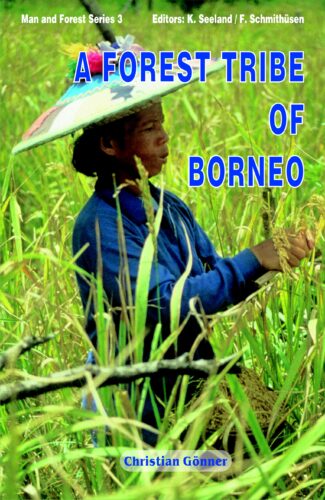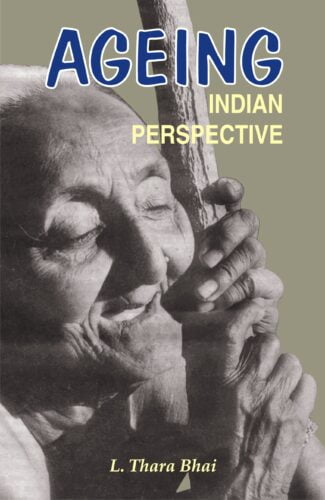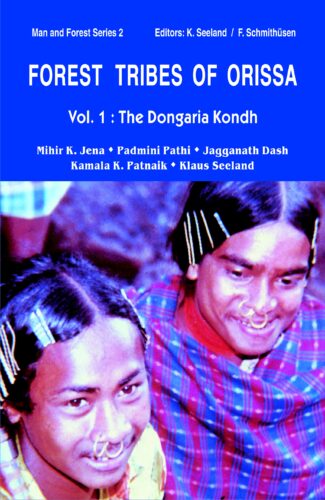-


Forest Tribe of Born...
Forest Tribe of Borneo
Resource Use Among the Dayak Benuaq by: Christian GonnerChristian Gnner takes the reader to the Dayak Benuaq village of Lempunah in Borneo (Indonesia), offering an insightful analysis of the resource use patterns of the local tribal population covering swidden agriculture, mixed forest gardens, rattan gardens, rubber gardens, and the non-cultivated forest in-between and temporal and spatial aspects of life.
₹720.00
ISBN: 9788124601938
Year Of Publication: 2002
Edition: 1st
Pages : xxvi, 366
Bibliographic Details : 40 Colour illustrations; Appendices; Glossary; Bibliography; Index
Language : English
Binding : Hardcover
Publisher: D.K. Printworld Pvt. Ltd.
Size: 23 cm.
Weight: 800
Here is the third volume in the series Man and Forest: a series trying to highlight the relevance of indigenous knowledge of various tribal communities in the sustainable management of forests/local resources against the growing challenges of environmental hazards and a declining resource base. The volume takes the reader to the Dayak Benuaq village of Lempunah in Borneo (East Kalimantan, Indonesia) where, for over three hundred years, the local tribal population has made extensive use of its forest resources. More than a hundred locally-differentiated rice varieties and 150 other crops are cultivated over a mosaic forest of 9,200 ha. Besides maintaining a high level of bio-diversity, Lempunah villagers are managing an enormous reservoir of flora and fauna for their extended subsistence economy, including trade with various forest products over long distances. Market fluctuations and other uncertainties here are coped with by resource diversification and a high dynamic flexibility in switching between the use of resources. Together with vivid descriptions, Christian Gonner offers an insightful analysis of local resource use patterns, covering swidden agriculture, mixed forest gardens, rattan gardens, rubber gardens, and the non-cultivated forest in-between and temporal and spatial aspects of life in Lempunah. Christian Gonner has, for this study, applied ethnological, ecological, and geographical field-research methods.
Foreword
Acknowledgements
Summary
Indonesian summary (Ringkasan)
Abbreviations
List of Illustrations
1. Research Context, Theoretical Frame and Methodology
Research Context
Theoretical Frame
The Ecosystem Concept — The Application of the Ecosystem Concept — The Ecosystem Concept in Anthropology — The Reification Problem: Is the Ecosystem an Acting Entity? — The Problem of Self-Regulation and Change — The Problem of Units and Boundaries — The Explanatory Problem — Causal Nets — Closing Remarks
Field Approach and Data Analysis
Methodology
Mapping of Swiddens and Forest Gardens — Household Interviews and Socio-Economic Survey
2. Research Area and Ethnography
Research Area
Ethnography of the Benuaq
Ethnicity — The Benuaq: History, Settlement Area and Language — Social Stratification and Status — Kinship and Marriage — Households and Other Social Groups — Traditional Adat Law and Land Tenure — Cosmovision — The Benuaq-Pantheon — Rituals
Lempunah — The Village, The People and Relevant Events
Description of Lempunah — Chronology of Events in Lempunah
3. Description and Analysis of Resource Use
Land Use Categories and Succession Cycles
Swidden Agriculture
Decision-Making Processes before Establishing a Swidden — Working Steps during the Swidden Cycle — Yield and Rice supply — Closing Remarks
Simpukng Forest Gardens
Rattan Gardens
Rattan Cultivation in Lempunah — Processing Steps, Value-Added and Price Development — The Rattan Crisis 1989-98
Rubber Gardens
Functions of the Forest in-between
General Aspects — Food From the Forest — Traded Animals and Pets — Construction Material — Forest Medicine — Other Useful Resources from the Forest
4. Socio-Economy, Patterns and Strategies of Resource Use
Socio-Economy
Extended Subsistence — Income Sources — Expenses
Patterns of Resource Use
Temporal Patterns — Spatial Patterns
General Strategies of Resource Use
Manipulation of the Environment — Conservation of Resources — Temporal Fitting, Self-Dynamics and Flexible Response — Diversification and Risk Minimisation — Socially and Religiously — Embedded Strategies
Closing Remarks
5. Conclusions
Prospects for Resource Use in Lempunah
Final Reflections
Annex- 1: Benuaq Word List
Annex- 2: Extracted Plants
Annex- 3: Cultivated Plants
Annex- 4: Bird Species
Annex- 5: Mammal Species
Annex- 6: Reptile and Fish Species
Glossary
Visuals
Bibliography
Index






